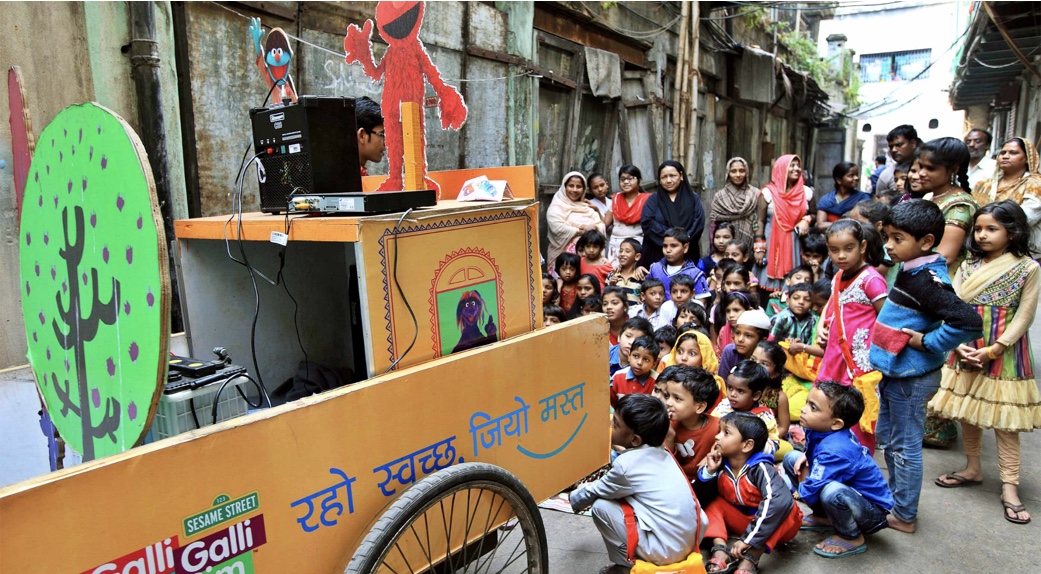Sesame Street India (Galli Galli Sim Sim)

Children gathered around a TV-equipped educational Sesame Street cart in India
About:
Created in 1969, Sesame Street is a non-profit which uses technology and Muppets characters to improve literacy (vocabulary, storytelling, wordplay, sound discrimination), numeracy (problem-solving, numbers and counting, cause and effect), healthy habits and physical, social and emotional health in marginalized children, including children with disabilities.
Today, in countries like Afghanistan, Bangladesh, and India, completely localized versions of Sesame Street are produced, working with partners on the ground to create adaptations tailored to the local language and culture.
By leveraging low-tech and low-cost technology solutions, the reach of the project is expanded to reach children is areas without access to the internet. Using a repurposed vegetable cart equipped with a television and DVD player, local teachers make the show a regular presence in urban slums, engaging children of all ages in narrow alleys with a special screening and educational games, sesame workshop is innovating in terms of the bets ways to bridge the last mile.
Preliminary results from research, conducted using an ethnographic qualitative and participatory methodology with the community radio stations, shows that communities are increasingly discussing issues around community participation (28 percent), the Galli Galli Sim Sim radio program (23 percent), and improvements in their own capacity and skills (20 percent). Three-month data shows that 32 percent of stories document “changes in the quality of life” in listeners and 32 percent mention “changes or improvements in children’s learning levels”. Twelve percent of these stories also document changes in practice and behavior in three months of exposure to the radio show. The project is exploring various sustainability strategies, such as having listeners pay to access the GGSS content."
Enablers / Barriers:
Sesame workshop programming by design uses low-tech channels like TV and radio to distribute learning content. In some cases, children in poverty may not have access to a TV or radio, or may not have the proper training and knowledge to access the content. To overcome the last mile, sesame workshop brought portable TV to low resource populated areas to ensure children were given access to the educational content, no matter their situation.
Details:
Implementing organizations:
Sesame Street
Country:
India
Language:
Hindi
Format:
Video, TV, Radio
Keywords:
Video, TV, Low-cost, Low-tech, Last mile
Source:
https://www.sesameworkshop.org/what-we-do/shows/galli-galli-sim-sim
https://earlychildhoodmatters.online/2019/using-the-power-of-mass-media-to-achieve-impact-at-scale-an-experiment-that-worked/
https://davebanesaccess.org/files/documents/119f2575-1b46-4047-9c6c-55846502c2ee.pdf, USAID Using Information Technologies (ICTs) to Support Universal Design for Learning (UDL).